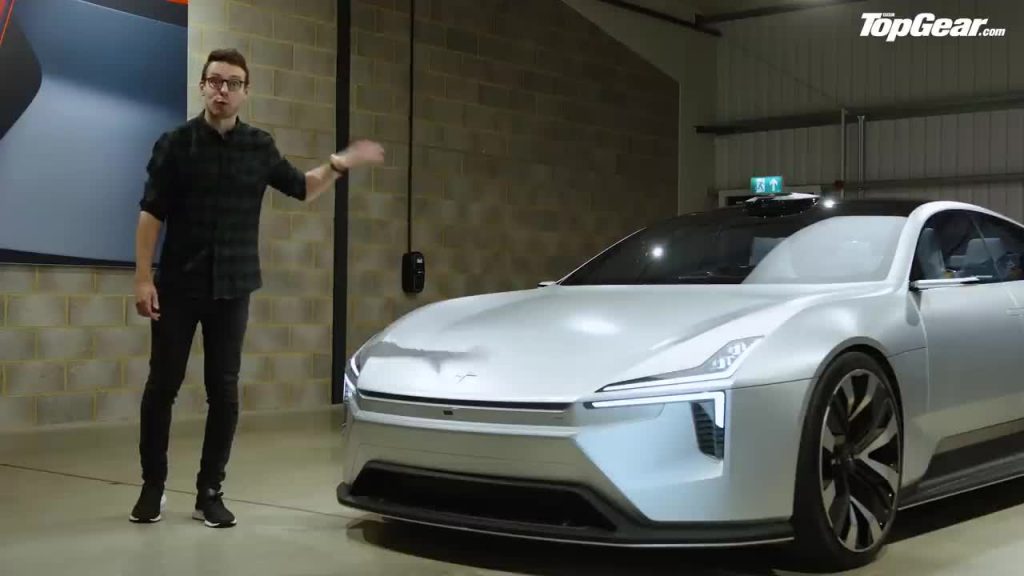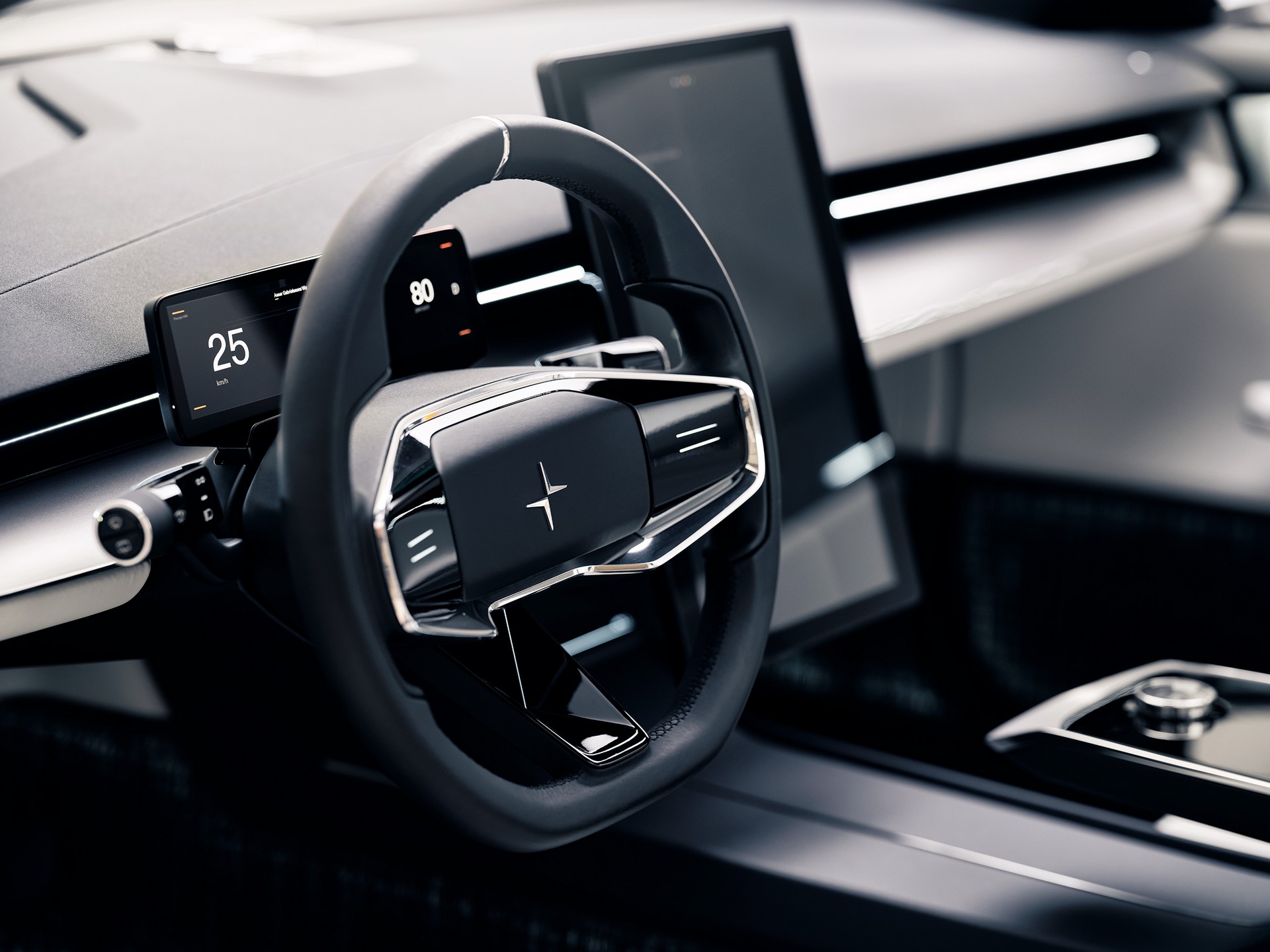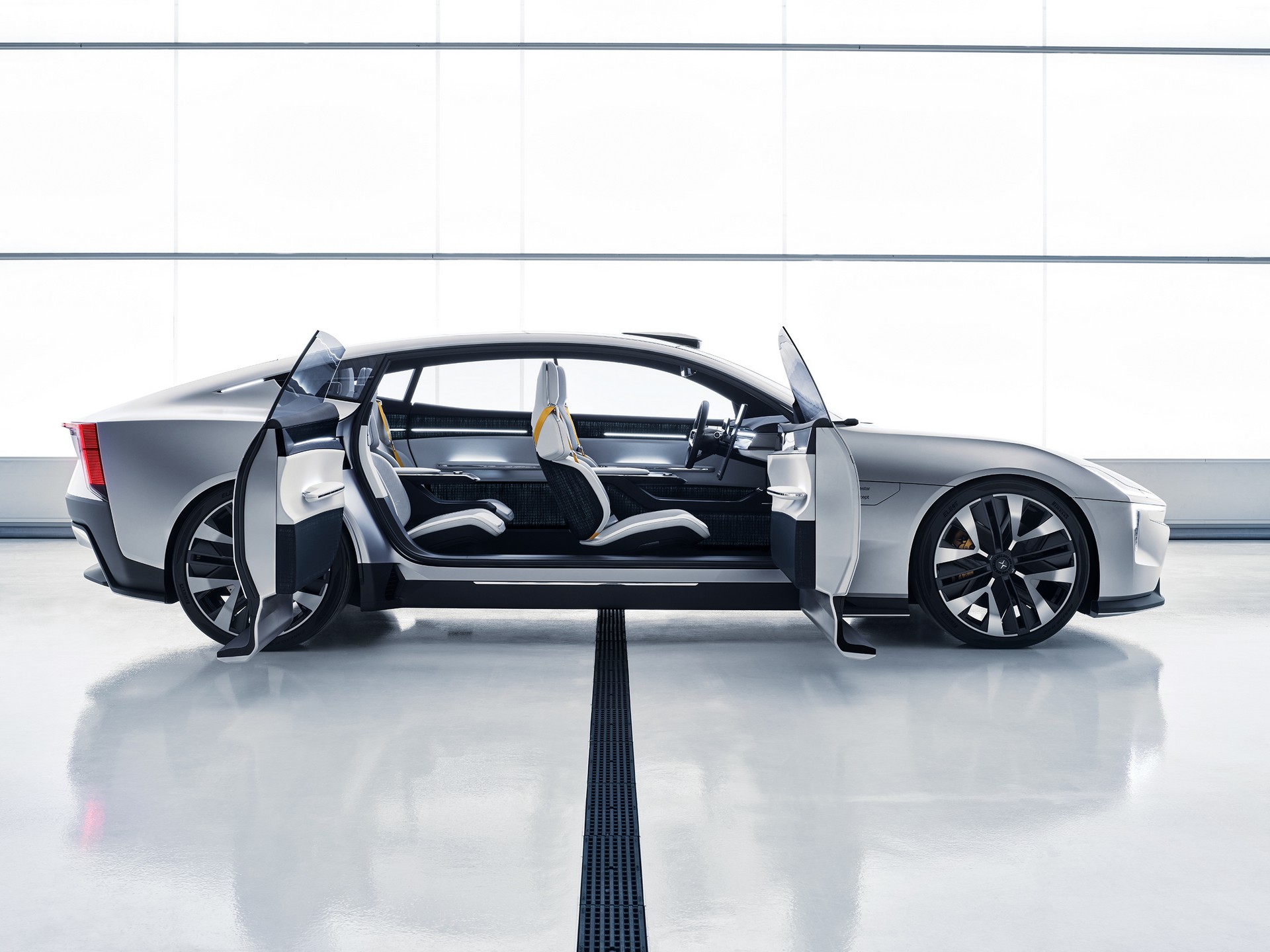Some may say that Polestar is still finding its place in the world. Initially a separate company focused on making Volvos less boring, they were bought by Volvo in 2015 to become an in-house skunkworks for the Swedes.
Then, in 2017, plans were announced by parent company Geely to spin-off Polestar as a separate entity. It’d still be co-owned by Volvo, but they’d focus solely on electrified performance cars.
But with only two models in the line-up — one of which is the limited run and quite pricey Polestar 1 hybrid — you’d be forgiven for thinking of the brand as a bit of a niche “also-ran.” Plus, with most car manufacturers outlining plans to go all-electric, including Volvo, that “electric-focus calling card” may have had its shine dulled a tad.
So the chaps at the Sino-Swede alliance have decided to double down on design, innovation, and sustainability. And, if the resultant production model looks anything like the Polestar Precept previewed by TopGear, then the results look quite interesting indeed.
This car is what Polestar calls a “Declaration of Intent” as opposed to a concept. It’s headed straight into battle with the Tesla Model S and Mercedes EQS. It features the now Polestar-staple “Thor’s hammer-inspired” headlights, a front air duct, a full-width taillight array, and a large diffuser that evokes pure performance.
Up front, it boasts a “Smart Zone” with sensors and cameras neatly packaged on the bumper. Up top, there’s a small bump that houses a slimmed-down LIDAR system for autonomous or semi-autonomous driving, and it even has cameras fitted in place of the rear windshield (we’re not too sure about that one, to be honest).
Read: Polestar Wants To Increase Its Global Presence By Double Come 2022
While most EVs strive to be environmentally friendly by not burning fuel, the Polestar Precept goes a step further by obsessing over recycling. It offers interior luxury with a host of sustainable and reused materials. The seats are woven from recycled plastic bottles, the bolsters and headrests are made from used wine corks, the carpets are formed from reclaimed fishing nets, and the carbon-fiber-style weave is made from crops that can be easily grown. A Swedish crystal on which a holographic polestar logo has been projected adds some sparkle to the cabin, but it’s unlikely to make production.
Much more likely to feature on a road car evolution is the 15-inch screen that sits atop the minimalistic dashboard. This screen will run on the next generation of Andriod too.
See: Polestar Precept: This Techy EV Concept Previews The Brand’s Future
There are no physical buttons in Tesla-like fashion, while a second screen behind the steering wheel displays driving statistics and battery percentage. Perhaps most impressive is the eyeball tracker, which aids in displaying relevant information to the driver. Perhaps a bit “Skynet,” but if it works in practice, it could be game-changing.
In all, the Polestar Precept is said to generate 80% less plastic waste than an average sedan. Thanks to these materials being 50% lighter than non-renewables, it will supposedly have an outstanding electric range, performance, and handling too.
However, despite Polestar supposedly being a performance brand, there are, as yet, no performance figures. But if the Precept goes half as well as it looks, consumers in the market space may well be in for a treat. Whether it becomes the Polestar Precept translates into a “4” or “5” it’ll likely be at least a couple of years before we see a road-going version. But it’ll join Polestar’s first SUV, the Polestar 3, that will launch next year. Prices? Expect it to aim straight for the likes of the Model S and Mercedes-Benz EQS.







